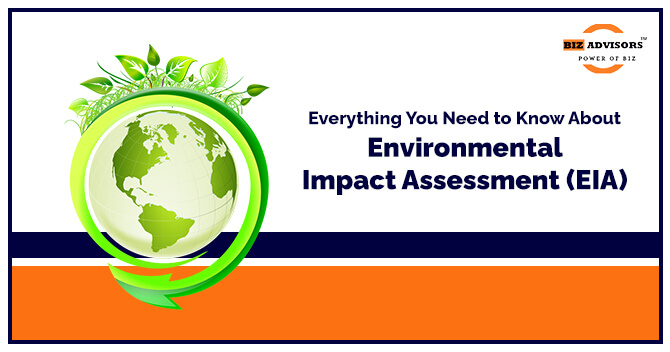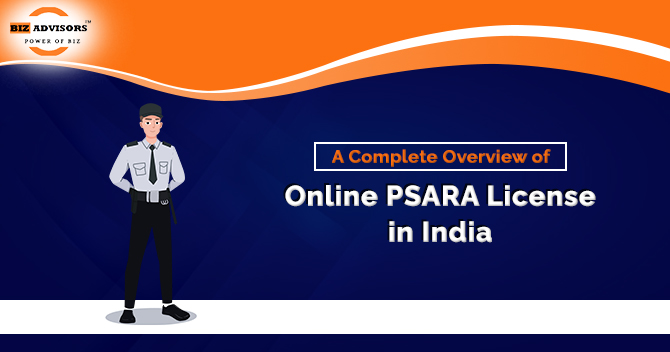Environmental Impact Assessment comprehensively is a detailed analysis and scrutiny of the environmental surroundings in a well-organized format. Environmental Impact Assessment provides a platform to have an unambiguous picturesque of environmental reports after a survey of the ecosystem diversity on a wide platform. It provides instantaneous support in visualizing the loopholes in channelizing the policies concerned with environmental welfare. Environmental Impact Assessment has proved to be an effective tool for delineating the outcomes of environmental degradation systematically. It assists in smoother and more efficient systemization of environmental reports to regulate an efficacious model of environmental structural patterns on a wide scale. Its primary objective is to bring to light the harmful repercussions that Homo sapiens might suffer due to the deteriorating environmental conditions day-after-day. A deep analysis or survey of the environment intends to adjoin the structural framework of the environment with the ideal pattern of law.
Environmental Impact Assessment (EIA)
Environmental Impact Assessment (EIA) is a procedure for assessing the ecological effects of a project that will have an impact on the environment before it is implemented.
Before starting a project, project proponents must have a thorough EIA Report and an EMP Report of the project to receive Environment Clearance (EC).
Assessing environmental impacts within the confines of enacted law or court precedent became necessary as a result of the regulated form of EIA being adopted in India.
To enforce important environmental laws in India, including the Wildlife Act (1972)[1], Water Act (1974), Forest Act (1980), Air Act (1981), and Environment (Protection) Act, the Department of Environment was established in 1974. (1986)
The following projects were mandated to get EC under the Environmental Impact Assessment Notification of 2006:
· Mineral extraction
· Investigation, processing, and production of offshore and onshore oil and gas
· River Valley undertakings
· Plants that produce heat
· Projects using nuclear energy & nuclear fuel manufacturing
· Coal washers
· Beneficiation of minerals
· Clinker plant
· Industry for refining petroleum
· Plants for Coca-Cola ovens
· Milling of asbestos and items containing asbestos
· Industrial use of chlorine
· Industries that use metal (ferrous & non-ferrous)
· Industry of soda ash
· Organic synthetic chemical industry
· Breweries
· Comprehensive paint industry
· Industry of processing leather, skin, and hide
· Agricultural chemicals
· The pesticides sector and intermediates specifically for pesticides (excluding formulations)
· Petrochemicals
· Manufacture of synthetic fibers
· Processed using petrochemicals
· Industry of pulp and paper excludes the production of paper from waste paper and from ready pulp without bleaching
· Market for Sugar
· Conveyance network for oil and gas
· Isolated handling and storage of toxic substances
· Physical infrastructure includes projects for runways, breaking grounds, commercial complexes, recreation areas, and places, as well as highways, bridges, harbors
· EPZs, SEZs, biotech parks, leather complexes
· TSDF, CETP, and CMSWMF building and construction projects
The Extent of Environmental Impact Assessment (EIA)
EIA is a tool used to evaluate a project’s or development proposal’s important environmental effects. Such policies make sure that decision-makers anticipate the environmental impact of their projects before they begin and then work to avoid, mitigate, or counteract those consequences.
By doing this, it is made sure that the proposer is aware of the plans’ environmental implications before a decision is requested. Numerous stakeholders are involved in the development of a planned set of activities, and the majority of them exert control long before filing for the appropriate project license.
In Appendix III of the EIA Notification, which describes the EC procedure, the general structure of the Environmental Impact Assessment is laid out.
The Operational Policy of the World Bank has further general (non-Indian) information on Environmental Impact Assessment.
The following areas are taken into consideration by the EIA Report:
· Modeling of air quality and air pollution control
· Managing water pollution
· Geosciences, Ecology, and Biodiversity
· Vibration and noise
· Water Hydrology, Ground Water Conservation
· Risk and Hazard Management for Land Use
· Management of Hazardous and Solid Waste
· Preserving the soil
· Economic and social effects
· Epidemiological studies and exposure assessment studies
· Disaster management plans and environmental risk analysis
· Corporate Environmental and Social Responsibility (CESR)
· Mitigation Strategies and Environmental Management Plan (EMP)
Essential Documentation Concerning the Environmental Impact Assessment
The Terms of Reference (TOR) identified at the time of scoping are followed in compiling the EIA report.
The significant documents needed for this are:
· General project details (name, location, etc.)
· Information is particular to the project, such as the planned division of the proposed area, the amount of water needed, the amount of garbage produced, etc.
· Utilizing natural resources for the project
· Substances or items that could be harmful or hazardous
· Air, land, and waterways are all affected by pollution.
· Production of light and heat emissions, as well as noise and vibration
· Accident Potential
· Factors that could have an additive or consequential effect
· Information about the environmentally vulnerable locations that are close to the project site.
· Site/layout diagram
· Report on the quality test (wherever applicable)
· Evidence that mitigating measures were used
· Evidence of an electrical and water connection
· Proof of the equipment installed
· ID as evidence of Signatory and Land Title
Various phases of Environmental Impact Assessment (EIA)
The environmental clearance procedure for new projects has four steps, some of which might not be necessary for all projects.
These four phases are as follows:
Stage 1) Assessment: Only projects and activities in Category “B” are subject to this level. Depending on elements including the project’s nature, the location’s unique characteristics, and other considerations, the state’s SEAC will decide if the project needs more research to compile an EIA. The project will be assigned a B1 or B2 classification if an EIA is necessary.
Stage 2) Site Survey and Planning: Only Category A and B1 projects are permitted at this stage. The Expert Level Committee, also known as SEAC, will now develop a comprehensive TOR for creating an EIA. The SEAC might also pay a visit to the location.
Stage 3) Public Consultation (for Category A and B1): The local community’s and stakeholders’ worries are identified at this point, taking into account all relevant factors such as the project’s socioeconomic, cultural, and human implications.
Stage 4) Evaluation phase: The Environmental Impact Assessment report and the results of the public consultation submitted by the project proponent will be carefully examined by the MoEF&CC or the SEIAA, who will then issue clear recommendations. After receiving the final EIA report, the procedure may take up to 60 days.
Conclusion
Environmental Impact Assessment helps in maintaining the integrity of the environment by comprehensively providing a platform to work on the lacunas of environmental balance. It also prepares a substratum for a robust environmental model in the context of promoting the well-being of the environment and decreasing the harmful elements, which degrade the environment. It lays out reports after regulating a deep analysis of the environment through multifarious channels of authorized sectors. Our legal experts at BizAdvisors.io provide a robust support system in the context of assisting individuals to easily go through the procedural formalities of Environmental Impact Assessment. You can freely contact our legal consultants at BizAdvisors.io for any kind of assistance or help in the context of the subject matter concerning Environmental Impact Assessment.
Read our article:Everything You Need to Know About Environmental Auditing
 9559179325
9559179325 9559179325
9559179325





